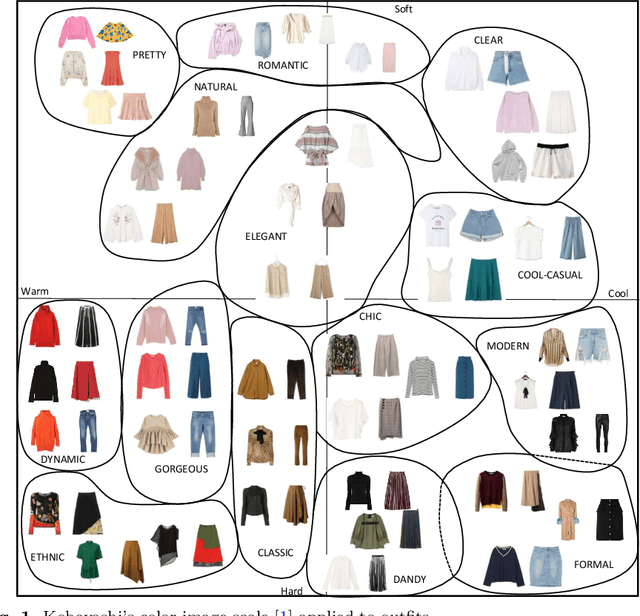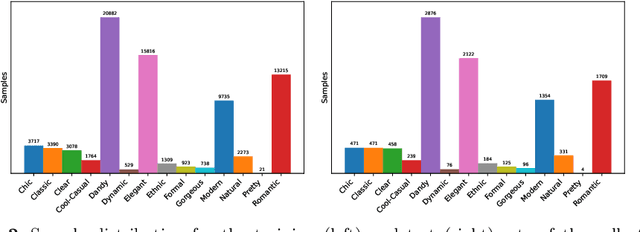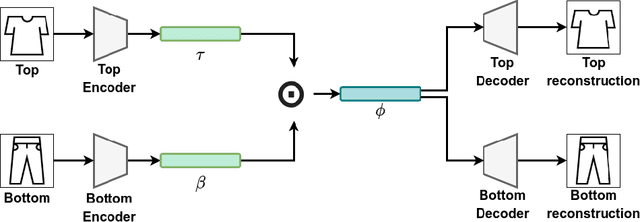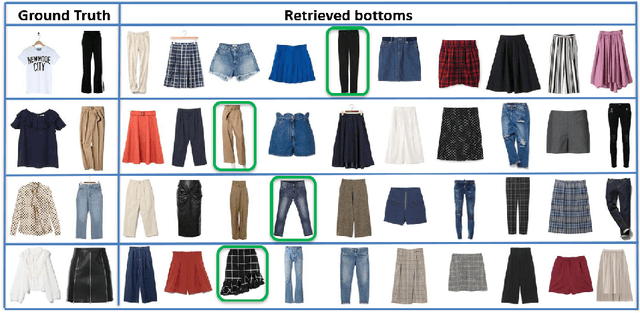Lavinia De Divitiis
Fashion Recommendation Based on Style and Social Events
Aug 01, 2022



Abstract:Fashion recommendation is often declined as the task of finding complementary items given a query garment or retrieving outfits that are suitable for a given user. In this work we address the problem by adding an additional semantic layer based on the style of the proposed dressing. We model style according to two important aspects: the mood and the emotion concealed behind color combination patterns and the appropriateness of the retrieved garments for a given type of social event. To address the former we rely on Shigenobu Kobayashi's color image scale, which associated emotional patterns and moods to color triples. The latter instead is analyzed by extracting garments from images of social events. Overall, we integrate in a state of the art garment recommendation framework a style classifier and an event classifier in order to condition recommendation on a given query.
Garment Recommendation with Memory Augmented Neural Networks
Dec 11, 2020



Abstract:Fashion plays a pivotal role in society. Combining garments appropriately is essential for people to communicate their personality and style. Also different events require outfits to be thoroughly chosen to comply with underlying social clothing rules. Therefore, combining garments appropriately might not be trivial. The fashion industry has turned this into a massive source of income, relying on complex recommendation systems to retrieve and suggest appropriate clothing items for customers. To perform better recommendations, personalized suggestions can be performed, taking into account user preferences or purchase histories. In this paper, we propose a garment recommendation system to pair different clothing items, namely tops and bottoms, exploiting a Memory Augmented Neural Network (MANN). By training a memory writing controller, we are able to store a non-redundant subset of samples, which is then used to retrieve a ranked list of suitable bottoms to complement a given top. In particular, we aim at retrieving a variety of modalities in which a certain garment can be combined. To refine our recommendations, we then include user preferences via Matrix Factorization. We experiment on IQON3000, a dataset collected from an online fashion community, reporting state of the art results.
 Add to Chrome
Add to Chrome Add to Firefox
Add to Firefox Add to Edge
Add to Edge